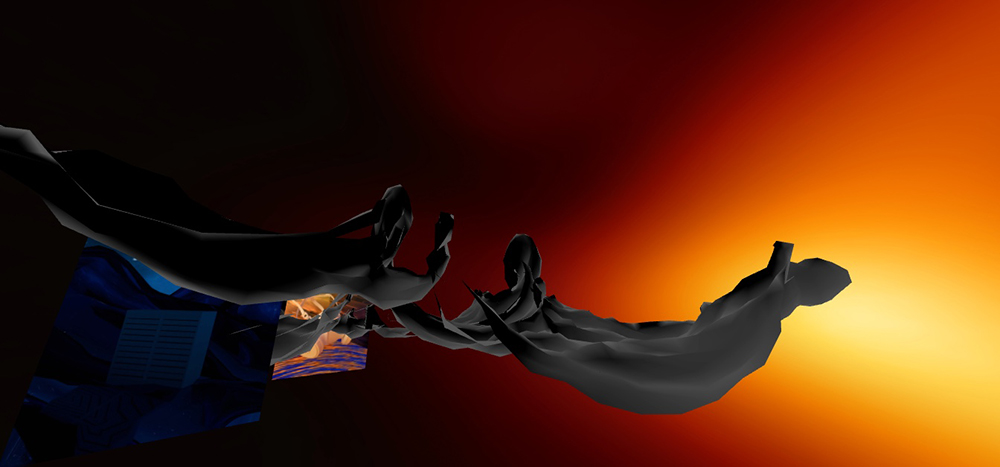Living in Harmony
Catalog, PDF, WebVR
2019
Dimensions variable
Living In Harmony was created for the Hole Black Hole catalog published by Flatland Gallery in Chicago. My contribution consists of 4 pages of speculative advertisements and a website that features WebVR. The first page reflects on the problems we are facing in regards to living within a data driven networked world, while the last 3 pages offer advertisements that consider how we may live and relate to these corporatized technological spaces with a limited understanding of them, how the body is used as a source of labor for these spaces and how pollution from these infrastructures attack the body. When entering the WebVR space, the viewer is placed at a distance from a remote and abstract landscape. Feeling lonely and disconnected, they navigate to the scene only to be surrounded by the advertisements from the publication.
Download the PDF here
Visit the WebVR portion here
Text from the first page:
Much of the activity within networked life is being subjected to machine learning algorithms in order to train and predict behavior of the physical body. These algorithms anticipate behavior, tastes, desires and are more and more often choosing what is seen on the internet. But currently there's a cognitive void, as scientists that create these algorithms don't fully understand what's happening within the space of training algorithms and the end results and choices algorithms make.1 There are portals in homes and in pockets that collect and transmit data to the void that is an AI "mind", which is increasingly forming digital perception. Time is disrupted in digital space by these voids. Feeds have become disjointed conglomerations that gives no projection of linear reality causing heightened anxiety. The algorithm can only survive with updated data, without it it becomes null and can't evolve.
The human body as a data source is an important asset to corporations, governments and algorithms. Perhaps the greatest irony is that these systems need consumer data to be trained and training them increases C02 emissions, which in turn pollutes and destroys customers. Some training emits more carbon than multiple automobiles.2 These algorithms and their data also live on distant physical objects, servers and computers that are mysterious on their own, which consume more and more vital energy. There is a contradictory feedback loop: data is given and collected, the algorithm train themselves and pollute, bodies become affected.
Without a change in behavior or investment in solutions, what future can we envision within this virtual and analytical black hole? How can consumer bodies survive impending carbon overload? Will convenience override privacy? How will we be able to live in harmony with these systems? The following three pages consider these questions in the form of speculative proposals.
1) https://www.technologyreview.com/s/604087/the-dark-secret-at-the-heart-of-ai/
2) https://www.technologyreview.com/s/613630/training-a-single-ai-model-can-emit-as-much-carbon-as-five-cars-in-their-lifetimes/
Images from the WebVR site:





